Burton upon Trent, long known as the unofficial capital of Britain's brewing industry, is also home to a museum of all things beer, the National Brewery Centre. The museum was opened in 1977, in a disused annex of the Bass brewery. It was originally known as the Bass Museum of Brewing, and is still known locally as the Bass Museum. But recent decades have been turbulent for the world of big brewing, with branding and ownership changing often. The Bass Brewery was sold to Coors in 2000, the museum then became the Coors Visitor Centre. That operation was costing £1m a year to maintain, too much for Molson Coors, as it soon became, to justify, and the site closed in 2008. But in 2010, it reopened as the National Brewery Centre, wholly independent, it seems, of the neighbouring brewing concerns, owned by a trust and run largely by volunteers.
Just like the brewing industry that it celebrates, the museum relies heavily on hospitality sidelines to stay afloat, offering reception packages for weddings and funerals, and much else besides. As a result, the biggest investment in recent years has been to the restaurant and on-site pub—which has a strong connection to the museum itself, as historical beers, brewed on-site, are available on tap. The rest of the museum feels a little down at heel, and is clearly divided into two sections, representing the two periods of its history. The first gallery, showing the mechanics of industrial scale brewing, dates from 1977 and is little changed since then. Rather than update these displays, a new wing was added when the museum reopened in 2010. That gives much more context about the history of brewing in Burton, as well as the history and culture of beer.
So, on the first gallery. Although old-fashioned, the displays here are informative, and give a good overview of all the processes involved in hop cultivation, malting, and brewing. Everything is focused on the large-scale brewing systems in Burton, as they were up until the mid-20th century. One particularly impressive display is in the car park—a Burton Union System set, all lovingly restored.
Although this was already history when the museum opened in 1977, the displays in the first gallery give the impression that the technology they are presenting is that of the present day. And so it is, although the brewing world is more diverse now than it was then. In particular, the history of malting is presented as a progression from floor malting to pneumatic malting, and the fact that floor malting continues, as an artisanal pursuit, is not really considered.
|
|
|
|
|
The museum has an impressive collection of brewery vehicles from the down the years. There is a gallery of drays, and a stable of shire horses. There are also some fun cars, including a barrel car and a bottle car. Steam power is also well represented, with a huge working steam engine, brought here from a nearby maltings, and a steam train with its own mock-up platform.
When the museum opened, there was a small brewery included on-site. This was described as a micro-brewery, but it was only micro by Burton standards—a tower brewery system, albeit on a small scale. That brewery is still in situ, but no longer operates. Instead, a modern brewery is included in the new gallery, the so-called William Worthington Brewery.
There was no brewing going on the day we visited, but this is a valuable update on the earlier galleries, showing how it is all done today, even if the spectacle is less awe-inspiring than the steam-age contraptions shown earlier on. The rest of this new gallery has displays about the history of the town, about the shipping of beer, and about pub culture.
Some of this is far from glamorous, and is probably pitched more towards nostalgia than erudition.
Sadly, I was driving, so I couldn’t partake in any of the beers brewed on-site when we got to the tap room.
But I took a few bottles home, and so far have been very impressed. The modestly named Masterpiece IPA is the flagship of the William Worthington Brewery. The label has a picture of one of the museum’s shire horses—perhaps it is named after him. But drinking this beer is a real history lesson. It is 5.6%, yeasty and made with British hops. Given the changes that this style has undergone in the craft beer age, it is a welcome reminder that only a generation ago IPA meant something completely different. It almost seems like false advertising to sell this as an IPA. The nearest commercial example I can think of is Sam Smith’s India Ale, and they have adapted the IPA name to avoid misleading expectations. But Masterpiece IPA is the epitome of the National Brewery Centre project. It is an excellent example of a historical beer style, the sort of beer that Burton was associated with a generation ago. There is still plenty of beer brewed in this town of course, but if you think of Staropramen, and Newcastle Brown Ale, to take just two examples, most of it pretends to be from somewhere else. We drink beer from this town all the time, but it takes a project like this to remind us of when beer was proud to be Burton.



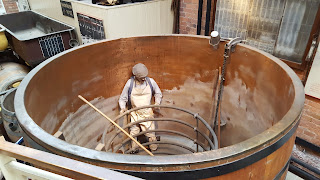
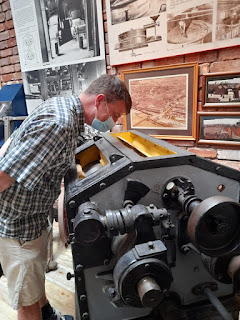
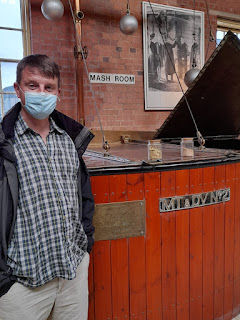

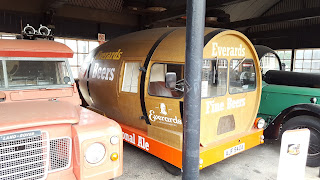
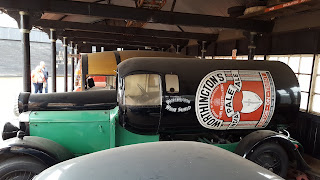
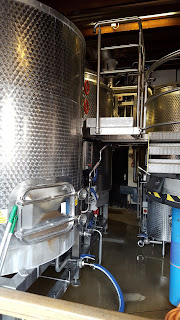





No comments:
Post a Comment